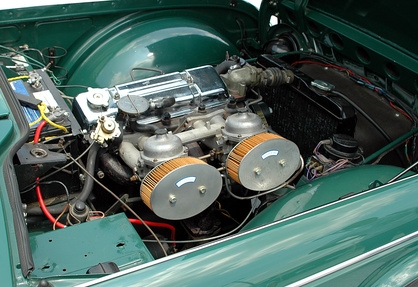
Oil sludge is one of the most costly problems facing car owners today. More advanced engine designs often result in unexpected problems that cause sludge to build up in the engine's oil system. The sludge is particularly dangerous on screens or in small passages, where it can cause a clog that prevents oil from reaching critical areas. This will ultimately result in catastrophic engine failure, which can only be repair by replacing the entire engine. You can dramatically reduce your chances of having an oil sludge problem.
Recognize if your engine is prone to mechanical failure caused by oil sludge in the engine. While any engine can potentially develop oil sludge, some are more prone to the problem than others. If your car has an engine with a known history of sludge problems, take extra care to protect your car from sludge damage.
Switch the products that you use for engine oil. Never use conventional motor oil if you are concerned about oil sludge. You should switch to a purely synthetic motor oil, such as Castrol GTX or Mobile 1. These oils may cost more, but they are much cleaner and will reduce the chances of sludge developing, as well as cleaning away any existing sludge. You should also use the largest oil filter that will fit on your car, to help remove as much debris as possible.
Change your oil frequently. Some manufacturers will recommend that you change your oil every 5,000 or 7,500 miles. Over time, they have changed this to increase the frequency of oil changes. If you are fighting oil sludge, your motor oil and filter should be changed every 3,000 miles or three months, whichever comes first. Changing it more frequently will not hurt.
Perform a Seafoam treatment every 18,000 miles, or every sixth oil change. Seafoam is a brand of engine treatment that will push its way through the passages where oil flows. This cleans any sludge out and washes it into the oil pan, where it can be easily drained away. Not only will the Seafoam treatment help fight the battle against oil sludge, but you will probably notice improved gas mileage after using the product.
Take your car to the mechanic every 40,000 miles to have the engine flushed. Flushing the engine will completely clear any passages and make the inside of the engine like new. This treatment is done in place of the Seafoam treatment mentioned in Step 4.
Monitor your engine closely. If you start to see oil appear on the top of the engine, it could be an indication that your PCV valve has become clogged and is leaking oil. Replacing the valve is an inexpensive repair that can increase your car's performance. Ignoring the problem could lead into serious problems. Keep a close watch for oil on the engine, and replace the PCV valve as soon as it is noticed.